
Inventor, Herman Koehl
For some people, challenges are merely opportunities to solve problems. This was particularly true for Herman Koehl, an engineer who moved to the United States shortly after World War II and worked for the U.S. Air Force. For Koehl, engineering served as an opportunity to solve problems and invent new solutions. And he was good at it.
In fact, he was instrumental in developing a fastener that was used to assemble jet engine turbine blades onto the wheel.
“At the time, there was no other fastener that could accomplish what Mr. Koehl developed,” explains Christie Jones, VP and director of marketing with SPIROL, a global manufacturer of precision engineered components for fastening and joining. The company was also one of Koehl’s “inventions,” along with a couple of business partners. “A type of spiral pin, the fastener that Koehl originally invented was unique in that it was strong enough to resist the forces generated during its use, but flexible enough that it isolated the shock and vibration from the material in which it was used to prevent hole distortion and keep the assembly intact.”
This was significant for a jet engine because of the massive amount of stress and vibration that occurs with the assembly. Typically, even simple fasteners such as nuts and bolts that are subject to extreme conditions will vibrate and can break or fall apart because of the load.
“So, just imagine a solid pin that’s pressed into a hole in thin material. If a strong or repeated force is applied to the pin, it transmits that load onto the hole wall. This occurs because of the solid pin’s rigidity,” explains Jones. “Eventually, elongation results and the pin will fall out or break under the load. Essentially, this was why Koehl’s coiled spring pin was developed — to prevent such failures.”
At the time, another type of spring pin already existed called the “slotted spring pin,” which is still used in certain applications today. It can flex almost to the point of becoming a circle so that it resembles a hollow, tubular component. But at that point, the slotted spring pin has no further “give” and becomes inflexible. “By comparison, if you were to look at the cross-section of the coiled spring pin that Mr. Koehl invented, it resembles more of a jelly roll made of steel. It offers two-and-a-quarter coils with zero gaps to limit flexing,” says Jones. “This is important in high-vibration applications.”

A coiled spring pin.
The key here is that Koehl’s invention can flex during and after its installation. “Perhaps what’s most impressive about this is that it was the 1940s, so it’s not like the Internet existed for related tips or resources, or to explain its capabilities or installation requirements,” she says.
Koehl not only had to teach engineers how to use the coiled spring pin, but he had to approach organizations to attain the approved standards for the product. This included with the American Society of Mechanical Engineers (ASME) and the International Organization for Standardization (ISO), which was newly founded in 1947.
“And that’s something unique about SPIROL today,” adds Jones. “We continue to teach engineers and companies about fastening and joining because there is no formal fastener-related education available at engineering schools. And this is absurd if you think about fastening and how prevalent and important these components are in our daily lives.”
This is particularly concerning in certain safety-critical applications, such as steering columns, brakes, airplane engines, and others. “For example, your car’s steering wheel doesn’t come off in your hands when you make a turn, nor does the brake pedal fall off when your foot presses on it to stop. These parts are all held together by fasteners and yet training remains largely unregulated in the industry.”
Jones says an important part of SPIROL’s objective is to manufacture quality fasteners and offer recommendations for the safe and proper use and assembly of its products. “It’s one thing to choose a fastening component but it’s just as important to consider the recommended hole diameter and tolerance for the product given its application, or even how thick the material of the hole should be so as to provide proper retention of the product.”
Today, SPIROL offers 12 major product lines, and Koehl’s “spiral wound” coiled pin is still the company’s flagship product.
Before SPIROL was developed, however, Koehl formed a partnership with two fellow engineers, Hans Prym and Walter Walter von Conta. This was after his time in the Air Force. Together, the trio aimed to sell licensed engineering services from Koehl’s coiled pin invention so that manufacturers could make and sell the product.
“However, Koehl was an inventor at heart,” shares Jones. “He continued to invent new products, such as the coiled pin and roll-formed tubular spacers, which provided an extremely economical way to space parts. Instead of selling the patents, the three partners eventually decided to open their own company in 1948 called, Connecticut Engineering and Manufacturing or CEM. This provided them with the equipment to manufacture and sell Koehl’s inventions themselves.”
In 1980, the name changed to SPIROL International Corporation. “Part of the reason for this is because CEM sounds rather small and local. SPIROL is truly a global company.” What began as an idea in Danielson, Connecticut, has grown into a multi-location corporation with facilities in the U.S., Canada, Mexico, Brazil, England, France, Germany, Poland, Czech Republic, Korea, and China.
The company serves an almost unlimited customer base, including the aerospace, automotive, agriculture, heavy equipment, electronics, government and defense, hand and power tools, furniture, hardware, and several other industries.

A map of SPIROL’s global locations.
“We’re a manufacturer that’s actually growing our plants,” says Jones. “This includes a recent 33 percent expansion in Connecticut, our main location. We’ve also expanded our Canadian location and recently opened new facilities in Mexico and France. Interestingly, one reason we’re growing so much is because we’re selling products so successfully into China — and ones that are not made there. We’re sort of bucking the system!”
Chances are Koehl wouldn’t have predicted the tremendous effects of his inventions or growth of SPIROL. Sadly, he passed before CEM even became known as SPIROL. However, his son, Hans Koehl, joined the company in 1959 and still serves as executive chairman of the board.
“Hans is retired but still comes into the office almost every day,” says Jones. “It’s truly a family business in the sense that all three of the original partners’ families are still very much a part of the company and on the board of directors. I’ve been here 25 years and can tell you just how much everyone cares about quality and customer service.”
Jones says she’s most proud of the educational component that SPIROL offers. “You know, I encourage customers and engineers to ask us for support or recommendations. It’s like if there’s something wrong with your lungs, you don’t just stick with your primary care physician. You go to a pulmonologist…a specialist in that area. So, when it comes to fastening and joining, we are the experts. We don’t make the engine that goes in an automobile, the seats on an airplane, or the material used for space shuttles, but we absolutely know how to design, engineer, and apply the fasteners involved.”

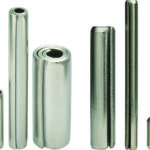

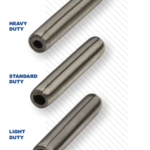
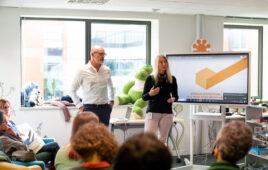
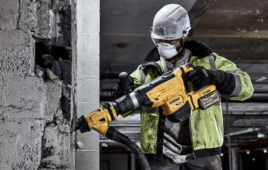

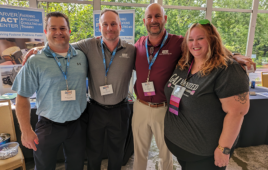
I have discovered that the Spirol pin is a great invention and one of the most reliable components for many applications. These pins reduce the required surface finish requirements of holes and also the tolerance demands, and appear to be much stronger than precision dowel pins that might be an alternative. So they are a great alternative to other methods where they are applicable. They will not replace nuts, bolts, or rivets, but they will not be replaced in many applications.
I do wonder about how they are produced, That would be an interesting story.